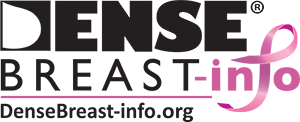NEW STUDY
Effect of an Educational Intervention on Women’s Health Care Provider Knowledge Gaps About Breast Cancer Risk Model Use and High-risk Screening Recommendations revealed important knowledge gaps regarding appropriate use of the Gail model versus the Tyrer Cuzick model among women’s health care providers, and many were unclear about what types of imaging to recommend for screening women at high risk of breast cancer.
The study included 177 women’s health care providers. Before reviewing the educational material:
- 48% knew the Tyrer-Cuzick model is used to identify women who meet high-risk criteria for MRI screening
- 49% knew the Gail model should not be used to identify women who meet high-risk criteria for MRI screening
- For a high-risk 30-year-old 68% knew screening MRI is recommended and 54% knew mammography/tomosynthesis is recommended, but only 19% knew both are recommended.
- For a high-risk 30-year-old, 53% knew screening ultrasound is not recommended
Nearly all knowledge gaps significantly reduced after web-based education based on DenseBreast-info.org content and reviewed in our CME course, Dense Breasts and Supplemental Screening.
STUDY
Effect of an educational intervention on women’s healthcare provider knowledge gaps about breast density, breast cancer risk, and screening identified important knowledge gaps about implications of breast density among women’s healthcare providers and showed that these deficiencies can be effectively addressed with web-based education.
The study, which included 177 providers, was designed to assess the effect of an educational intervention, based on DenseBreast-info.org website content, on women’s healthcare provider knowledge of breast density and comfort level discussing these topics with patients. Post intervention, all knowledge gaps were resolved or reduced and comfort in discussing breast density implications increased. Specifically:
- Pretest, 57% knew women with extremely dense breasts have four-to-six-fold greater breast cancer risk than those with fatty breasts, compared to 97% posttest;
- Pretest, 29% knew risk increases with increasing amount of glandular tissue, compared to 63% posttest;
- Pretest, only 6% knew 3D/tomosynthesis does not improve cancer detection in extremely dense breasts over 2D mammography, compared to 88% posttest;
- Pretest, 71% would consider supplemental ultrasound after mammography in an average-risk 50-year old with dense breasts compared to 88% posttest;
- Comfort in navigating patient discussions about breast density impact on breast cancer risk, masking cancer detection on mammography, and appropriate consideration of supplemental screening increased significantly from pretest to posttest.
STUDY
Radiologic Technologist and Radiologist Knowledge Gaps about Breast Density Revealed by an Online Continuing Education Course identified provider knowledge gaps and their predictors based on an analysis of posttest responses to DB-i’s CME/CE course, Breast Density: Why it Matters. The study found important knowledge gaps regarding breast density, breast cancer risk assessment, and breast cancer screening. Key knowledge gaps:
- Nearly half of surveyed physicians and technologists erroneously thought that lifetime risk increases with increasing age.
- About 1/3 overestimated the ability of tomosynthesis to detect cancer as nearly equal to MRI
- About 1/3 mistakenly thought the Gail risk model should be used to determine if a woman is high risk for the purposes of recommending MRI or genetic testing.
Webinar on study highlights:


